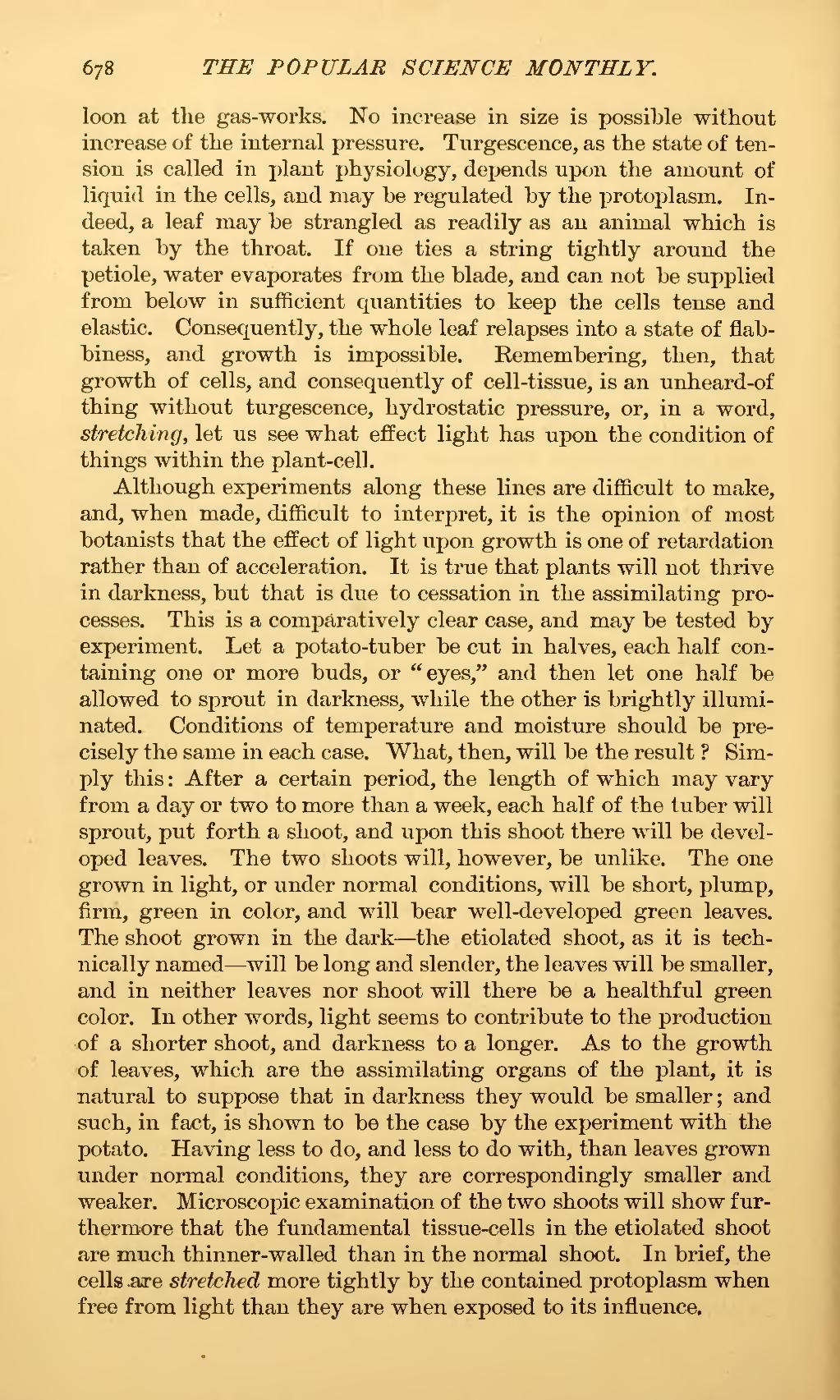loon at the gas-works. No increase in size is possible without increase of the internal pressure. Turgescence, as the state of tension is called in plant physiology, depends upon the amount of liquid in the cells, and may be regulated by the protoplasm. Indeed, a leaf may be strangled as readily as an animal which is taken by the throat. If one ties a string tightly around the petiole, water evaporates from the blade, and can not be supplied from below in sufficient quantities to keep the cells tense and elastic. Consequently, the whole leaf relapses into a state of flabbiness, and growth is impossible. Remembering, then, that growth of cells, and consequently of cell-tissue, is an unheard-of thing without turgescence, hydrostatic pressure, or, in a word, stretching, let us see what effect light has upon the condition of things within the plant-cell.
Although experiments along these lines are difficult to make, and, when made, difficult to interpret, it is the opinion of most botanists that the effect of light upon growth is one of retardation rather than of acceleration. It is true that plants will not thrive in darkness, but that is due to cessation in the assimilating processes. This is a comparatively clear case, and may be tested by experiment. Let a potato-tuber be cut in halves, each half containing one or more buds, or "eyes," and then let one half be allowed to sprout in darkness, while the other is brightly illuminated. Conditions of temperature and moisture should be precisely the same in each case. What, then, will be the result? Simply this: After a certain period, the length of which may vary from a day or two to more than a week, each half of the tuber will sprout, put forth a shoot, and upon this shoot there will be developed leaves. The two shoots will, however, be unlike. The one grown in light, or under normal conditions, will be short, plump, firm, green in color, and will bear well-developed green leaves. The shoot grown in the dark—the etiolated shoot, as it is technically named—will be long and slender, the leaves will be smaller, and in neither leaves nor shoot will there be a healthful green color. In other words, light seems to contribute to the production of a shorter shoot, and darkness to a longer. As to the growth of leaves, which are the assimilating organs of the plant, it is natural to suppose that in darkness they would be smaller; and such, in fact, is shown to be the case by the experiment with the potato. Having less to do, and less to do with, than leaves grown under normal conditions, they are correspondingly smaller and weaker. Microscopic examination of the two shoots will show furthermore that the fundamental tissue-cells in the etiolated shoot are much thinner-walled than in the normal shoot. In brief, the cells are stretched more tightly by the contained protoplasm when free from light than they are when exposed to its influence.
